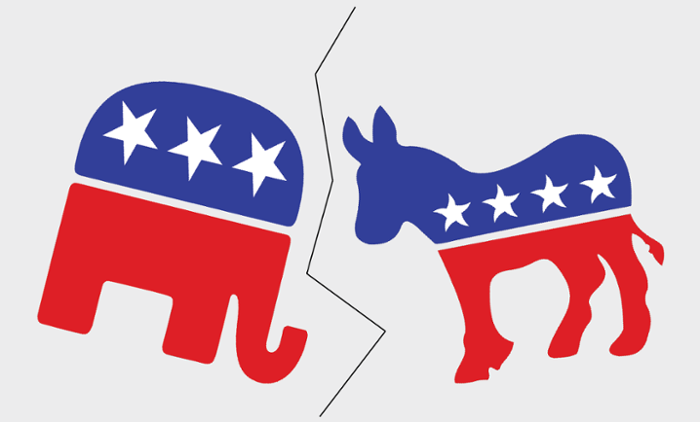Spreading the (Partisan) Word
New research analyzes impact of partisan news outlets
Get all our news
Media may have more impact than we realized—even in an era of fragmented media”
James Druckman
Payson S. Wild Professor of Political Science and an IPR fellow

Only 10–15 percent of the American public watches partisan news outlets such as MSNBC and Fox News, but their polarizing impact reaches beyond the viewers of their broadcasts, according to research by IPR political scientist James Druckman.
“For those who want to gauge the impact of political communications, we need to consider how messages can be spread via networks,” Druckman explained.

The messages Druckman refers to appear in conversations across America every day. Someone who watched MSNBC (or Fox News) last night discusses the partisan media’s slant on issues with friends or colleagues, which can influence them even if they are not directly consuming the partisan media.
In fact, talking with viewers might have more effect on individuals’ opinions than actually watching the partisan media.
To test this network effect, Druckman and his co-authors, University of Pennsylvania’s Matthew Levendusky and Temple University’s Audrey McLain, a former IPR assistant editor, created an experiment using video clips about the Keystone XL pipeline from Fox and MSNBC. The clips allowed them to track the flow of partisan attitudes from individuals who watched partisan media to those who did not.
The researchers put two people who had watched the media segment and two who had not into discussion groups. In half of the experimental discussion groups, participants identified with the same political party, and in the other half, participants belonged to both parties.
In results published in the American Journal of Political Science, the researchers identified clear “two-step communication flows” between individuals who were exposed to partisan media and those who were not. The communication flow occurred in both same and mixed-party groups.
In the same-party groups, the partisanship of opinions was amplified. The members of these groups demonstrated even more polarized opinions than those who viewed partisan segments but did not discuss them with others.
In the mixed groups, on the other hand, discussion moderated polarized opinions. However, even in these groups, people’s opinions were more polarized than in the group that did not view the partisan media clips at all.
“Interpersonal interactions not only transmit information but also bring with them pressures to conform with the social group that are really strong,” Druckman said.
The experimental results underline the importance of studying media exposure as it spreads through conversation and discussion. The experiment’s design will enable researchers to examine other forms of indirect media exposure such as social media.
“Media may have more impact than we realized—even in an era of fragmented media,” Druckman noted.
James Druckman is Payson S. Wild Professor of Political Science and an IPR fellow.
Published: September 14, 2018.